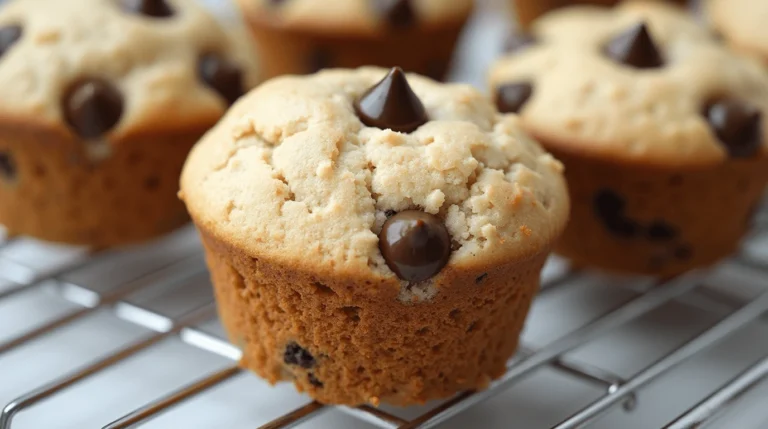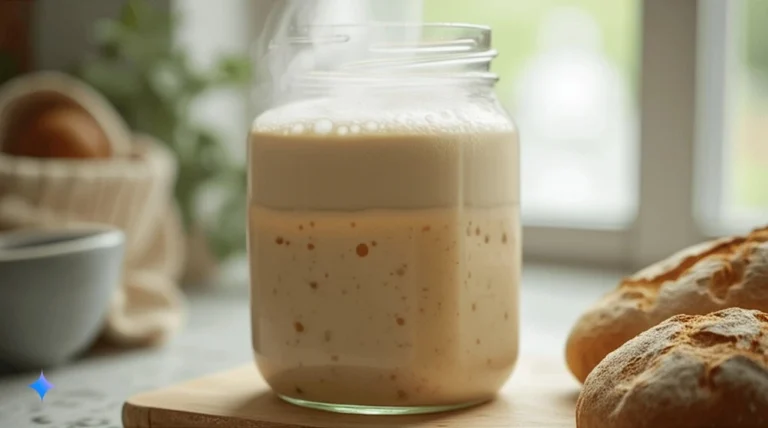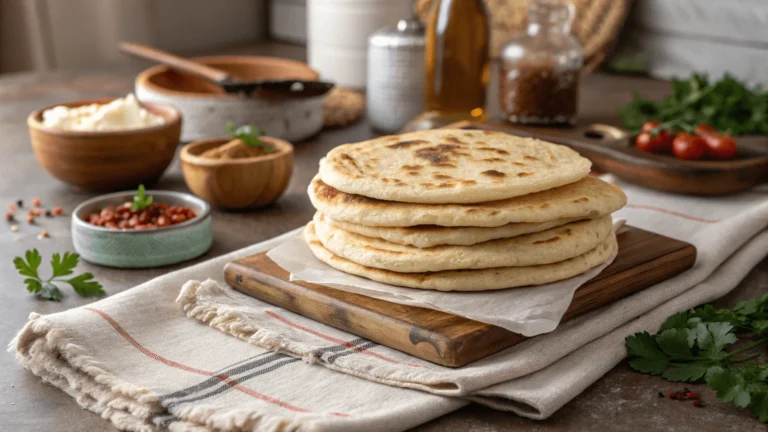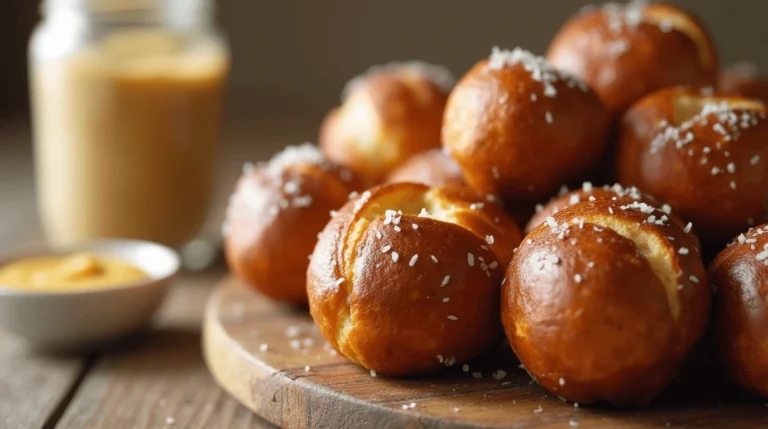Sourdough Discard Banana Muffins
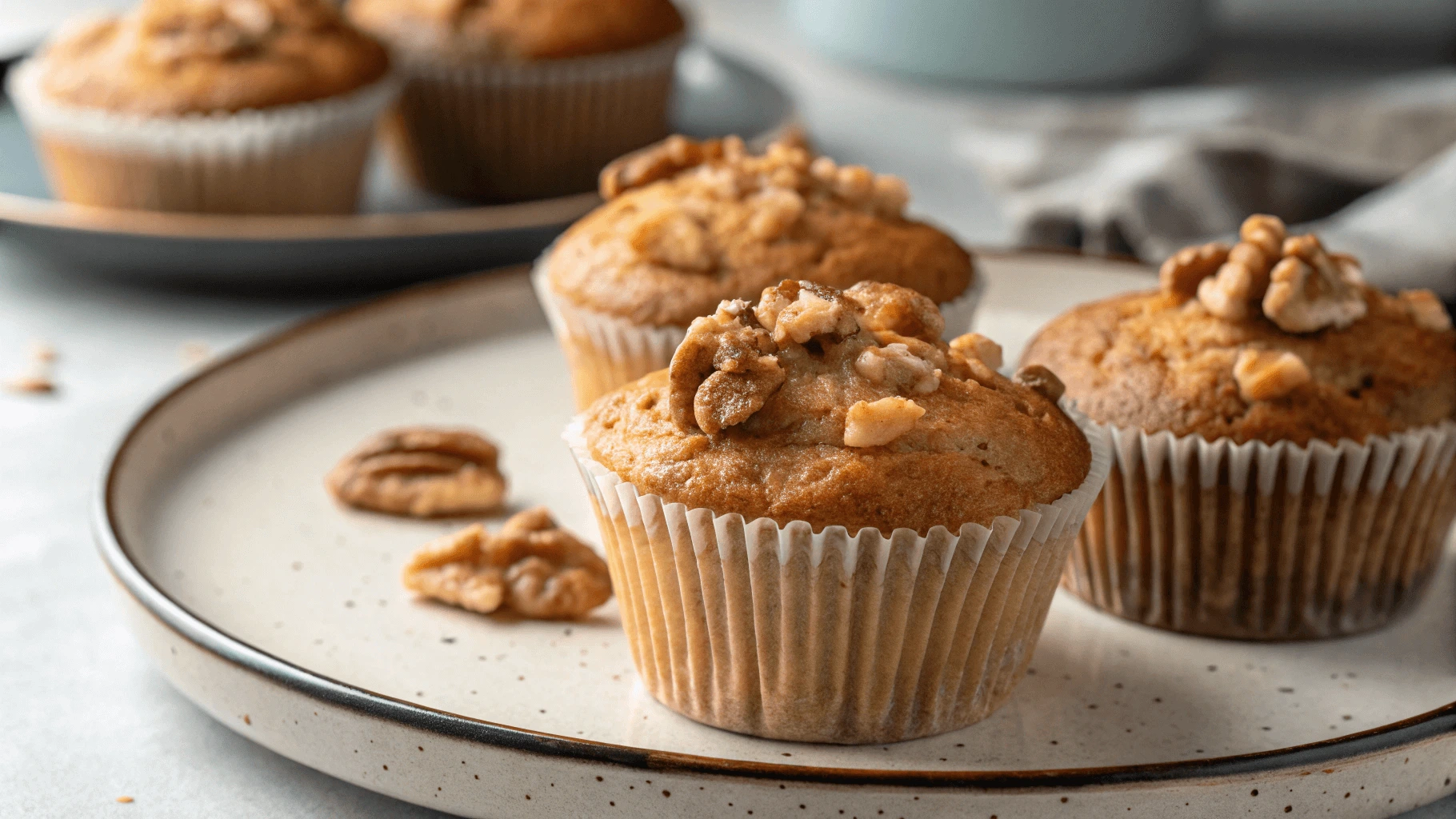
Are you tired of throwing away perfectly good sourdough discard? That tangy, bubbly mixture doesn’t need to go to waste! Transform your kitchen routine with these irresistible sourdough discard banana muffins—a brilliant way to repurpose your starter while creating a breakfast treat that’ll have everyone asking for seconds. These muffins combine the complex flavor of fermented sourdough with the natural sweetness of ripe bananas, resulting in a tender, moist breakfast option that’s both economical and delicious. Whether you’re a sourdough enthusiast looking for creative discard recipes or simply a banana muffin lover seeking something special, this recipe will revolutionize your morning routine and help you reduce food waste at the same time.
What is Sourdough Discard Banana Muffins?
Understanding Sourdough Discard
Sourdough Discard Banana Muffins is the portion of your sourdough starter that typically gets removed during the feeding process. When maintaining a sourdough starter, bakers regularly “discard” a portion before feeding the remainder with fresh flour and water. This discard, while not active enough to leaven bread, still contains valuable wild yeasts and lactobacilli bacteria that can add tremendous flavor and nutrition to quick breads like muffins.
Benefits of Cooking with Discard
Using sourdough discard in your baking offers numerous advantages:
- Reduces food waste by repurposing what would otherwise be thrown away
- Adds complex, tangy flavor notes that enhance sweet recipes
- Improves the keeping quality of baked goods
- Provides a subtle fermented quality that adds depth to simple recipes
- Makes use of the nutritional benefits from fermentation
How Discard Enhances Baked Goods
The acidity of sourdough discard banana muffins reacts wonderfully with baking soda, helping your muffins rise beautifully. This reaction creates a tender crumb and contributes to the overall texture. The natural fermentation process also breaks down some of the flour’s components, making nutrients more bioavailable and potentially easier to digest compared to standard quick breads.
The Perfect sourdough discard banana muffins Base

What Makes a Great Muffin
The ideal sourdough discard banana muffins strikes a delicate balance between being moist and fluffy, sweet but not cloying, and substantial without being dense. The perfect muffin should also have a slightly domed top with a tender interior. Adding sourdough discard to this equation elevates the flavor profile while maintaining the textural qualities we love in a great muffin.
The Role of Ripe Bananas
Ripe bananas are crucial to this recipe’s success. As bananas mature, their starch transforms into sugar, enhancing their sweetness and flavor.
Look for bananas with abundant brown spotting or even completely brown peels—these will provide the best flavor, natural sweetness, and moisture. The riper your bananas, the less additional sugar you’ll need to add to your recipe.
Balancing Sweetness and Tanginess
The magic of sourdough banana muffins lies in the interplay between the sweet, caramelized notes of ripe bananas and the subtle tang of fermented sourdough. This balance creates a complex flavor profile that’s more interesting than standard banana muffins. The acidity from the discard also enhances the banana flavor, making it more pronounced and nuanced.
Texture and Moisture Considerations
sourdough discard banana muffins adds significant moisture to your muffin batter, which contributes to a tender crumb. However, it’s important to balance this moisture with enough dry ingredients to create structure. The fermentation process in sourdough also affects gluten development, which influences the final texture of your muffins, typically making them more tender than their conventional counterparts.
Essential Ingredients for Sourdough Banana Muffins
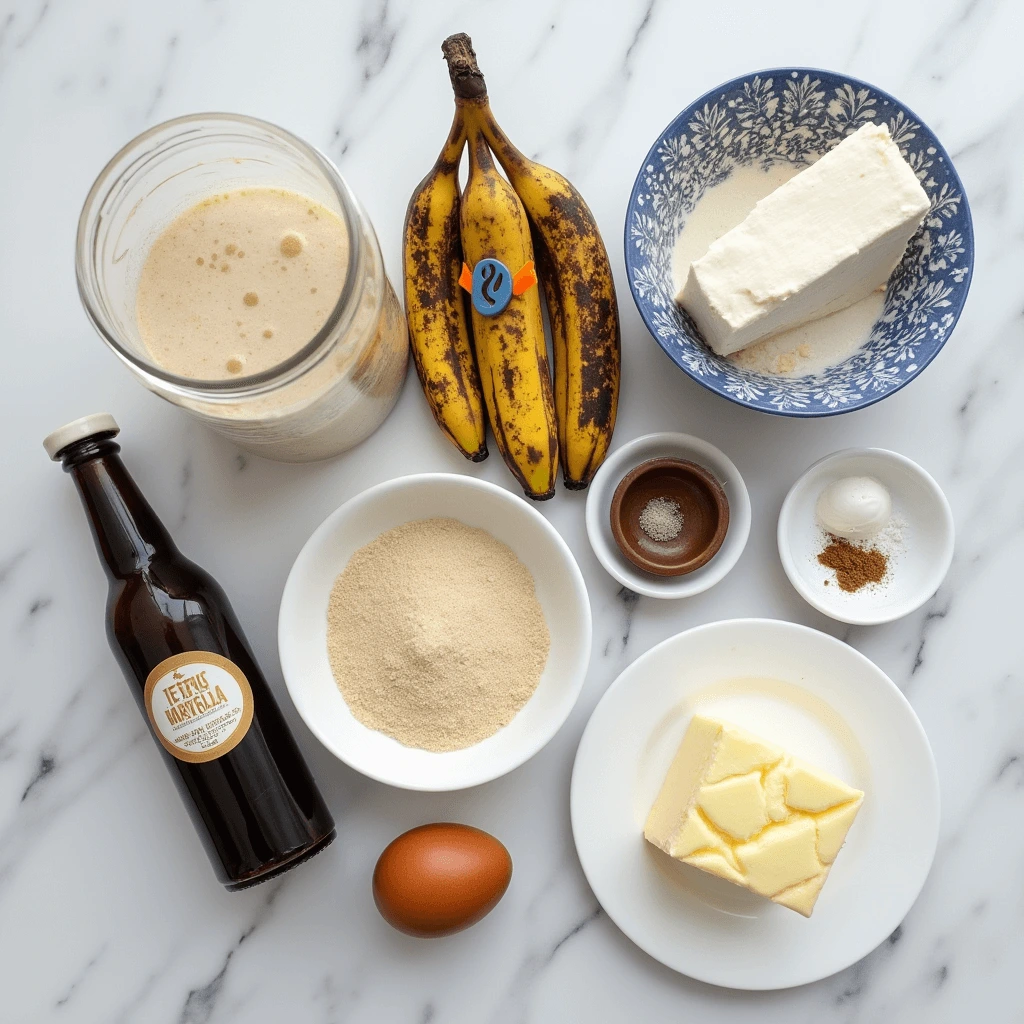
| Ingredient | Amount | Notes |
|---|---|---|
| Sourdough discard | 1 cup | Room temperature for best incorporation |
| Ripe bananas | 2-3 medium | The riper, the better for flavor and sweetness |
| All-purpose flour | 1½ cups | Unbleached preferred; can substitute up to half with whole wheat |
| Granulated sugar | ½ cup | Reduce to ⅓ cup if using very ripe bananas |
| Eggs | 2 large | Room temperature for better emulsification |
| Butter | ⅓ cup | Melted and slightly cooled |
| Vanilla extract | 1 tsp | Pure vanilla extract provides the best flavor |
| Baking soda | 1 tsp | Works with the acid in the discard to provide lift |
| Salt | ½ tsp | Enhances all flavors |
| Cinnamon | 1 tsp | Optional but complements the banana flavor beautifully |
How to bake sourdough discard banana muffins?
Preparing Your Ingredients
- Heat your oven to 350°F (175°C) and prepare a 12-cup muffin pan with paper liners or grease it thoroughly.
- Ensure your sourdough discard is at room temperature for easier mixing.
- In a large bowl, mash the ripe bananas until smooth with just a few small chunks remaining.
- Whisk your dry ingredients (flour, baking soda, salt, and cinnamon) in a separate bowl.
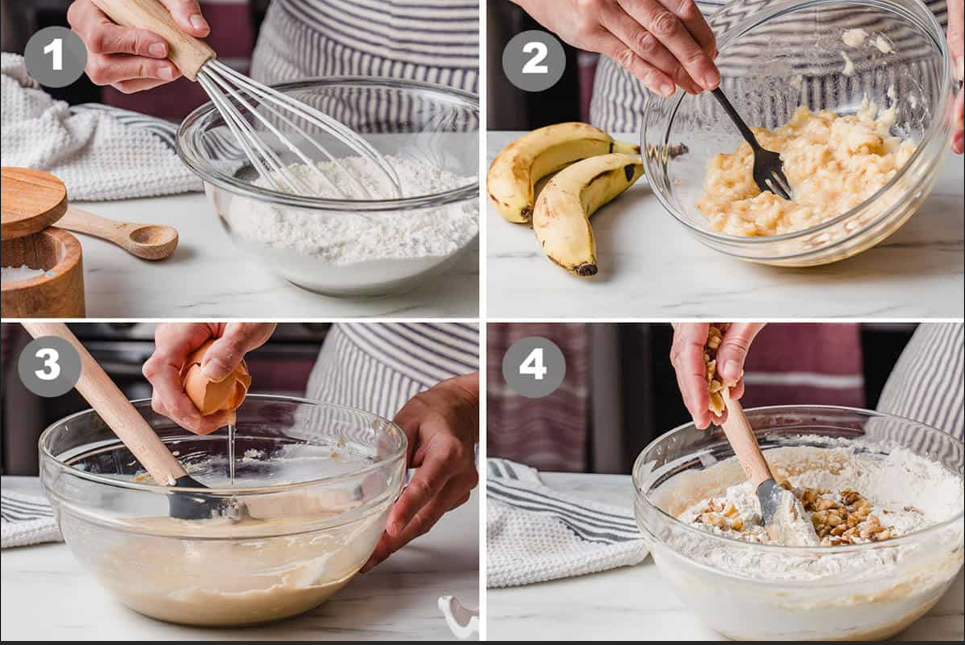
Mixing Wet and Dry Components
- Add melted butter, sugar, eggs, and vanilla to the mashed bananas and mix until well combined.
- Stir in the sourdouMix in the sourdough discard until completely blended.
- Slowly incorporate the dry ingredient blend into the wet ingredients.
- Mix just until no dry flour pockets remain—overmixing will result in tough muffins.
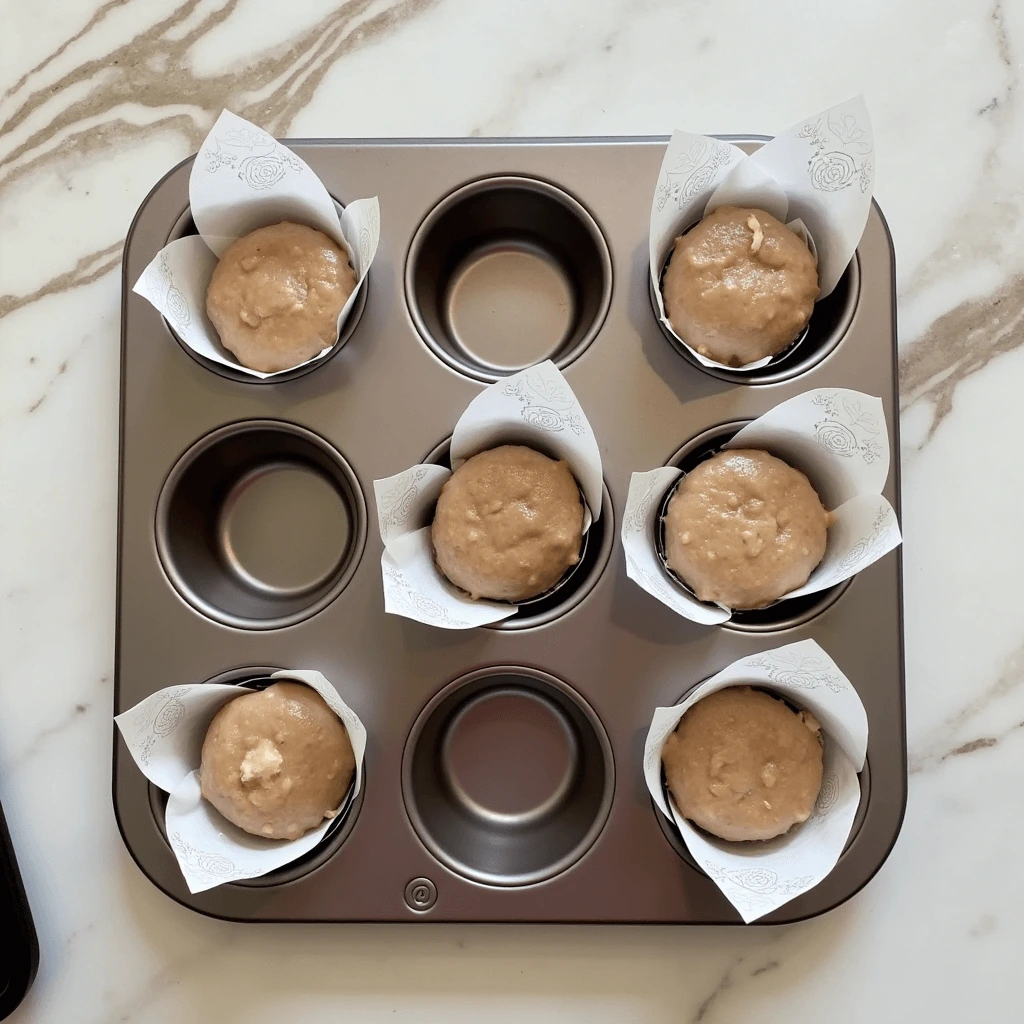
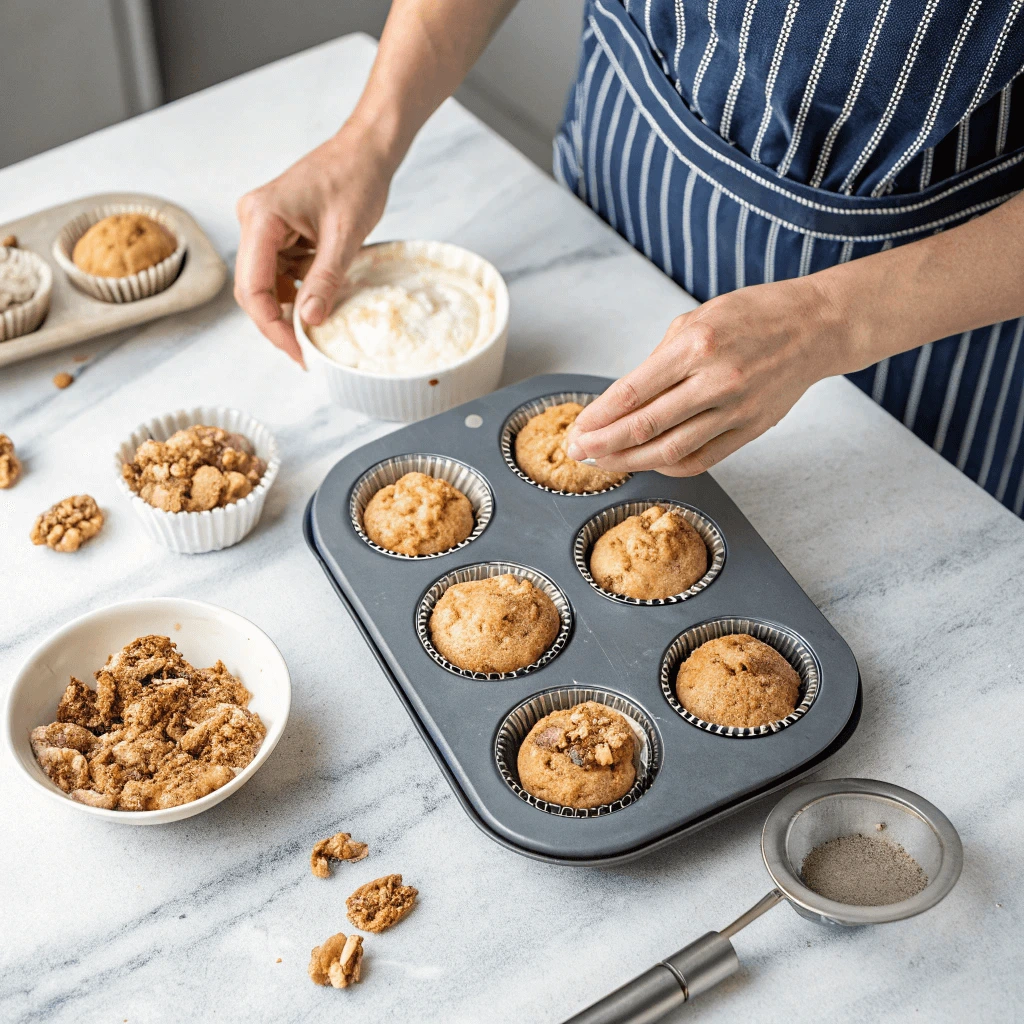
The Proper Folding Technique
Proper folding is crucial for tender muffins:
- Use a wide rubber spatula rather than a whisk for combining the final batter.
- Cut through the center of the mixture, then draw the spatula along the bottom of the bowl and up the side.
- Rotate the bowl slightly and repeat until just combined.
- If adding mix-ins like nuts or chocolate chips, fold them in using the same gentle technique.
Filling Muffin Cups for Perfect Domes
- Fill each muffin cup about ¾ full—approximately 3 tablespoons of batter per cup.
- For bakery-style domed tops, start baking at 425°F (220°C) for 5 minutes, then reduce to 350°F (175°C) for the remaining time.
- Sprinkle the tops with a little turbinado sugar before baking for a crunchy, caramelized crust.
- Bake for 18-22 minutes total or until a toothpick inserted in the center comes out clean with a few moist crumbs.
Troubleshooting Common in sourdough discard banana muffins
Density Issues and Solutions
If your sourdough banana muffins turn out too dense:
- You may have overmixed the batter—mix only until just combined
- Your baking soda might be expired—test by adding a pinch to vinegar to see if it fizzes
- The oven temperature might be too low—consider using an oven thermometer
- Too much banana or discard can increase density—measure ingredients carefully
Preventing Soggy Bottoms
Avoid the disappointment of soggy-bottomed muffins with these tips:
- Make sure your oven is completely preheated before you begin baking.
- Don’t leave muffins in the tin for more than 5 minutes after baking
- Place the muffin tin on a middle rack for even heat distribution
- If using very ripe bananas, you might need to add an extra tablespoon of flour
Fixing Uneven Rising
For perfectly risen muffins every time:
- Rotate your muffin tin halfway through baking
- Check that your oven doesn’t have hot spots using an oven thermometer
- Ensure all ingredients (especially eggs and discard) are at room temperature
- Fill all muffin cups to the same level for consistent baking times
Adjusting for Different Starters
Different sourdough starters may require recipe adjustments:
- Very liquid starters might need an extra 2-3 tablespoons of flour
- Stiffer starters may require a tablespoon or two of milk to achieve proper batter consistency
- Particularly acidic starters might need an additional ¼ teaspoon of baking soda
- Adjust sugar levels based on the sourness of your specific starter
Health Benefits of sourdough discard banana muffins
Nutritional Value Breakdown
Sourdough banana muffins offer an impressive nutritional profile:
- Bananas provide potassium, vitamin B6, and fiber
- Sourdough contributes beneficial bacteria and yeasts
- Whole grain flours (if used) add additional fiber and nutrients
- The fermentation process increases the bioavailability of minerals like zinc, magnesium, and iron
Prebiotic Properties of Sourdough
The fermentation process in sourdough creates beneficial effects:
- Produces prebiotic compounds that feed good gut bacteria
- Contains organic acids that may help regulate blood sugar response
- The fermentation process breaks down phytic acid, allowing better mineral absorption
- Creates a lower glycemic index product compared to regular quick breads
Benefits of Naturally Fermented Foods
Incorporating fermented foods like sourdough into your diet offers numerous advantages:
- Supports gut health through diverse beneficial microorganisms
- May improve digestibility of gluten proteins for some individuals
- The acidic environment helps preserve baked goods naturally
- Fermentation improves the nutritional quality of the flour.
Comparing to Store-Bought Alternatives
Homemade sourdough banana muffins typically outshine commercial options:
- Contain no artificial preservatives, flavors, or colors
- Have significantly less sugar than most store-bought versions
- Offer the benefits of fermentation not found in commercial products
- Allow control over ingredient quality and sourcing
- Cost a fraction of what you’d pay at a bakery or coffee shop
Storage and Freezing Tips
Refrigeration Best Practices
For extended freshness:
- Store in a sealed container in the refrigerator for a maximum of one week.
- Microwave refrigerated muffins for 10-15 seconds to refresh before eating
- The sourdough component actually helps these muffins maintain quality in the refrigerator better than conventional recipes
- Consider slicing and toasting refrigerated muffins for a different textural experience
Freezing for Long-Term Storage
For batch baking and meal prep:
- Place cooled muffins in a single layer on a baking sheet and freeze them thoroughly.
- After freezing, place into freezer bags or containers.
- Remove as much air as possible to prevent freezer burn
- Label with the date—muffins remain good for up to 3 months frozen
- Freeze unfrosted or unglazed for best results
Reheating for Fresh-Baked Taste
Enjoy that just-baked experience even with stored muffins:
- Thaw frozen muffins overnight in the refrigerator or for 2-3 hours at room temperature
- Reheat in a 300°F (150°C) oven for 5-7 minutes for the best texture
- Alternatively, microwave for 20-30 seconds if you’re in a hurry
- For a special touch, spread a little butter on halved muffins and toast under the broiler
Conclusion
Sourdough discard banana muffins represent the perfect marriage of practicality and indulgence. By transforming what would otherwise be waste into a delicious breakfast treat, you’re embracing a more sustainable approach to baking while creating something truly special. The tangy complexity of sourdough discard elevates classic banana muffins to new heights, creating depth of flavor that simply can’t be achieved with conventional recipes.
Whether you’re a sourdough enthusiast looking to reduce waste or simply someone seeking exceptionally delicious banana muffins, this recipe deserves a permanent place in your baking repertoire. So grab those spotty bananas, pull out your sourdough discard, and get baking.
Frequently Asked Questions
Q: Can I use sourdough discard straight from the refrigerator? A: It’s best to let refrigerated discard come to room temperature before using it in your muffin batter for optimal mixing and rising. Cold discard can be more difficult to incorporate evenly and may affect the final texture of your muffins.
Q: How ripe should my bananas be for these muffins? A: The riper, the better! Look for bananas with plenty of brown spots or even mostly brown peels for the sweetest flavor and smoothest texture. Black bananas that are soft but not moldy are perfect for baking as they offer maximum sweetness and banana flavor.
Q: Can I make these muffins gluten-free? A: Yes, you can use a gluten-free flour blend along with a gluten-free sourdough starter, though texture may vary slightly. For best results, choose a 1:1 baking blend that contains xanthan gum to help with structure, and consider adding an extra egg for binding.
Q: How tangy will these muffins taste with the sourdough discard? A: The tanginess depends on your starter’s maturity and activity. Generally, the muffins will have a subtle tang that balances nicely with the sweet bananas. A more mature discard that hasn’t been fed recently will have a stronger sour flavor, while a recently fed discard will be milder.
Q: Can I reduce the sugar in this recipe? A: Absolutely! The riper your bananas, the more natural sweetness they’ll contribute, allowing you to reduce added sugar by up to half. You can also substitute alternative sweeteners like honey or maple syrup (use about ¾ the amount of granulated sugar) for different flavor profiles.

